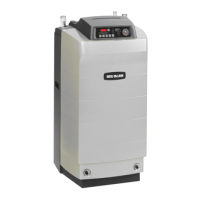
Do you have a question about the Weil-McLain ULTRA Ultra-105 and is the answer not in the manual?
| Model | Ultra-105 |
|---|---|
| Category | Boiler |
| Efficiency | 95% |
| Input BTU/h | 105, 000 |
| Boiler Type | Condensing |
| Heat Exchanger Material | Stainless Steel |
| Fuel Type | Natural Gas |
| Vent Type | Direct Vent |
| Dimensions | 17.5" W |
| Vent Diameter | 2 inches |
Connects 120 VAC power to the line voltage terminal strip.
Connects low voltage wiring to the low voltage terminal strip.
Connects room thermostat or end switch between terminals 5 and 6.
Connects outdoor temperature sensor between terminals 1 and 2.
Connects storage indirect water heater aquastat between terminals 3 and 4.
Connects additional limit controls and interlocks between terminals.
Guides the user to set the space heating mode and verify settings.
Instructions for setting the desired outlet water temperature for space heating.
Steps to set the target temperature for Domestic Hot Water (DHW) heating.
Steps to verify the setup for Domestic Hot Water (DHW) operation.
Overview of the microprocessor control module and its functions.
Lists electrical requirements for the Ultra boilers.
Details specifications for the control module, including fuses and timings.
Explains how the control module regulates boiler water temperature.
Describes the high limit safety feature that shuts off the burner.
Explains how the boiler prioritizes DHW heating calls.
Details the two additional levels of overrun protection provided by the control.
Explains the low water shutdown feature for safety.
How to set temperature based on outdoor conditions.
How to use a switch to disable space heating in summer.
Automatic increase of target temperature for faster system response.
Information about the boiler's circulator and its wiring.
How the control module provides freeze-up protection.
How external limit controls are wired for soft/hard lockout.
Steps to ensure proper operation after maintenance.
Critical safety step to re-install the boiler's front door.
Importance of checking fuses before replacing components.
List of tools and initial checks before starting troubleshooting.
Initial checks for wiring and gas pressures.
Accessing and viewing the last lockout code from the control module.
Steps to display the last lockout code and related information.
Ensuring correct boiler operation post-maintenance.
Lists necessary maintenance kits and their part numbers.
Safety warning about re-installing the boiler's front door.
Instructions for cleaning and treating boiler water with inhibitor.
Critical safety step to disconnect electrical power before servicing.
List of tools required for maintenance and troubleshooting.
Warning about requiring specialized equipment for combustion testing.
Identifies symptoms that indicate a need for combustion adjustment.
Step-by-step guide to checking flame and combustion readings.
Explanation of individual adjustable parameters for the control module.
Lists the factory default settings for various models and altitudes.
Situations where changing default parameters is necessary or desirable.
Common parameter adjustments for specific applications like outdoor reset.
How outdoor reset parameters can be adjusted for better performance.
Requirements for adjusting fan speeds at high altitudes.
Critical warning against changing specific parameters without understanding risks.
Detailed instructions on navigating the display and setting parameters.
How outdoor reset adjusts water temperature based on ambient conditions.
Explanation of how the control module regulates boiler outlet water temperature.
Adjusting outdoor sensor readings to correct for location.
Setting a minimum standby temperature to prevent boiler shutdown.
Recommended parameter settings for outdoor reset configurations.
Details on how the control module automatically increases target temperature.
Setting the minimum fan speed for low fire and ignition.
How ON and OFF differentials affect boiler turn-on/turn-off points.
Adjusting the OFF differential for better performance in low-mass systems.
DHW temperature detected by immersion sensor.
Parameter to activate or deactivate DHW heating.
Parameter to activate or deactivate central heating.
Target temperature for all outside temperatures or max target at ODT.
Minimum target temperature for outdoor reset when outside temp is above balance point.
Outside temperature at which target outlet water temperature is at maximum.
Boiler circulator runs constantly when outside temperature drops to this number.
Modifies outside temperature reading to correct for sensor location.
Minimum target outlet water temperature; boiler shuts off if below this.
Time before control module increases target temperature for heat calls.
Reduces calculated setpoint temperature based on outdoor temperature.
Sets maximum boiler input for central heating by limiting fan speed.
Sets maximum boiler input for DHW by limiting fan speed.
Sets fan speed during ignition; used for high altitude.
Length of time boiler circulator continues after central heating cycle.
Length of time boiler circulator continues after DHW cycle.
Temperature boiler water must drop below setpoint to turn boiler on.
Temperature boiler water must drop below setpoint to turn boiler on (DHW).
Temperature boiler water must rise above setpoint to turn boiler off (DHW).
Temperature DHW water must drop below DHW setpoint to turn boiler on.
Temperature DHW water must rise above DHW setpoint to turn boiler off.
Minimum time between consecutive central heating cycles.
Minimum wait time after DHW call before starting central heating.
Forces boiler to low fire if outlet-return temp difference is large.
Parameter for RMCI interface device, currently not available.
Sets target boiler outlet water temp in DHW mode; added to parameter 1.
Manually sets boiler input at a fixed rate for 15 minutes.
Sets a minimum standby temperature for the boiler.
Sets maximum target boiler temperature for 2nd CH circuit.
Sets minimum target boiler temperature for 2nd CH circuit.
Differential for 2nd CH circuit call when it is the master.
Manages boiler cycling when firing at low fire for extended periods.
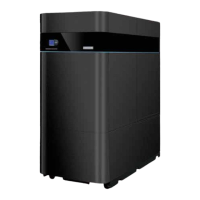
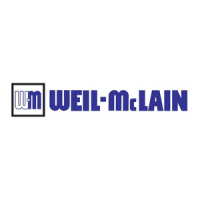


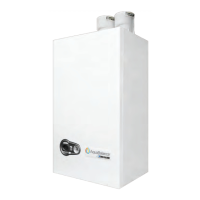
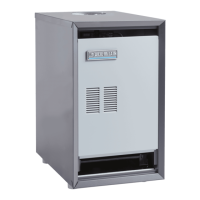
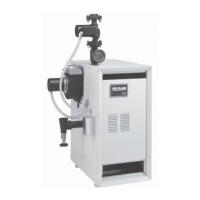
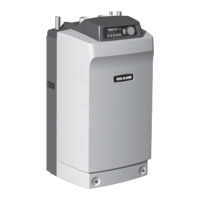
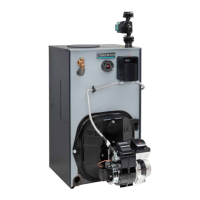

